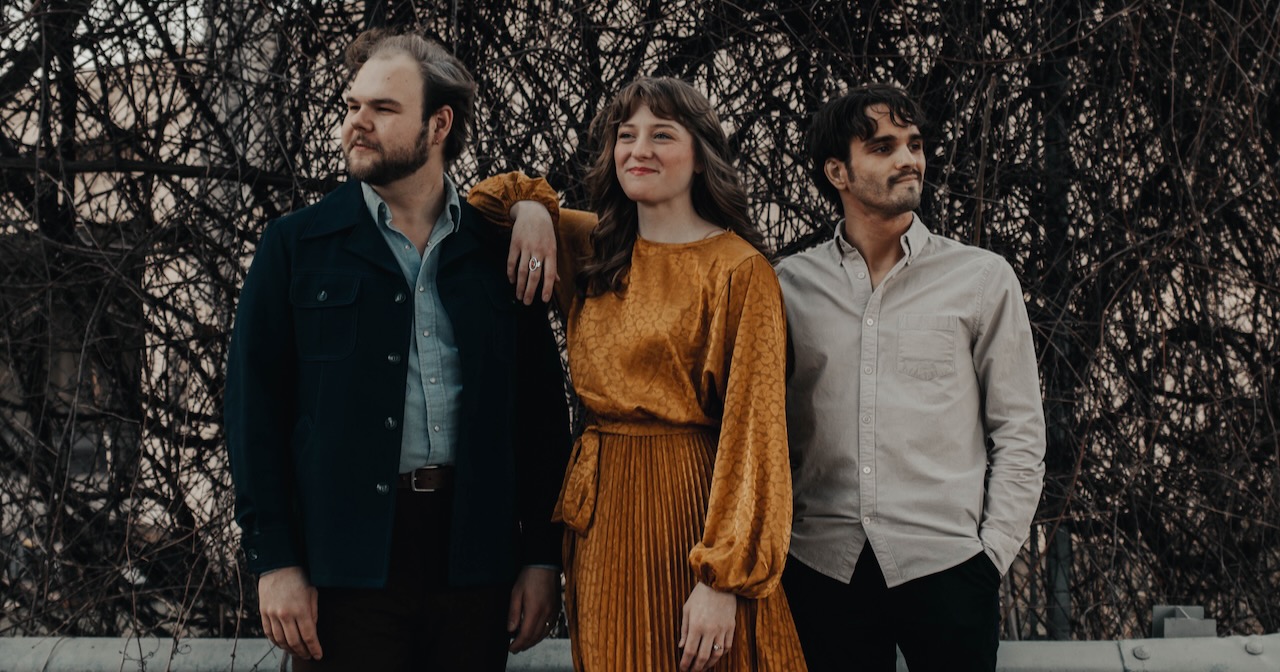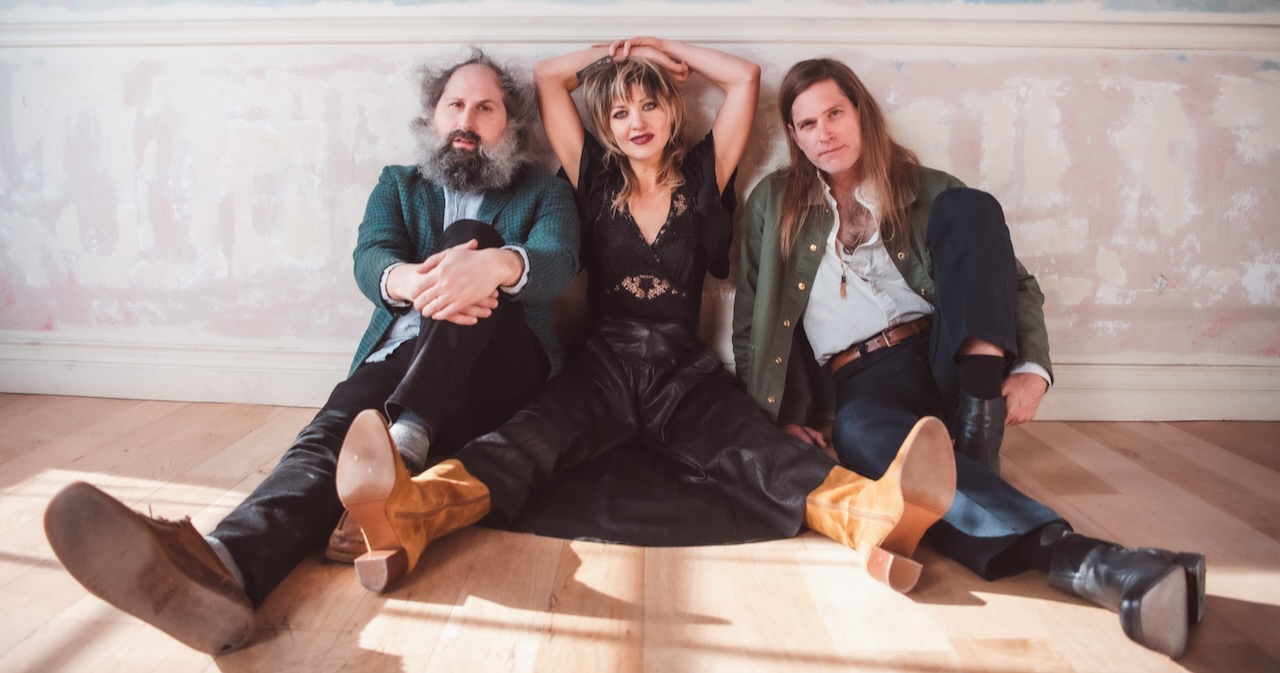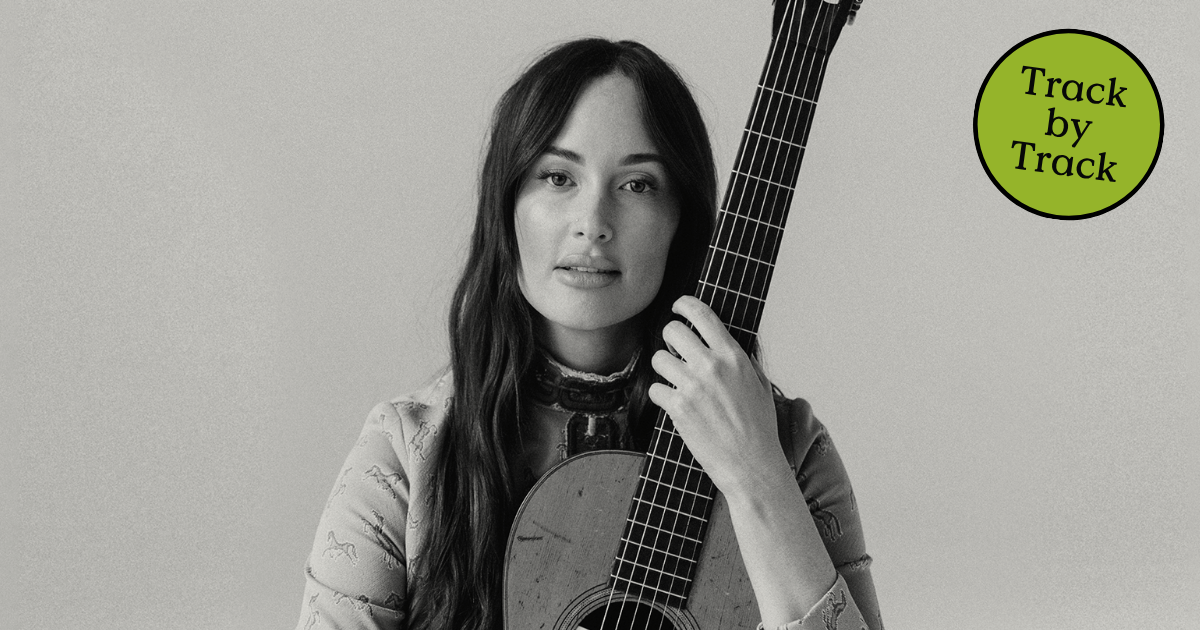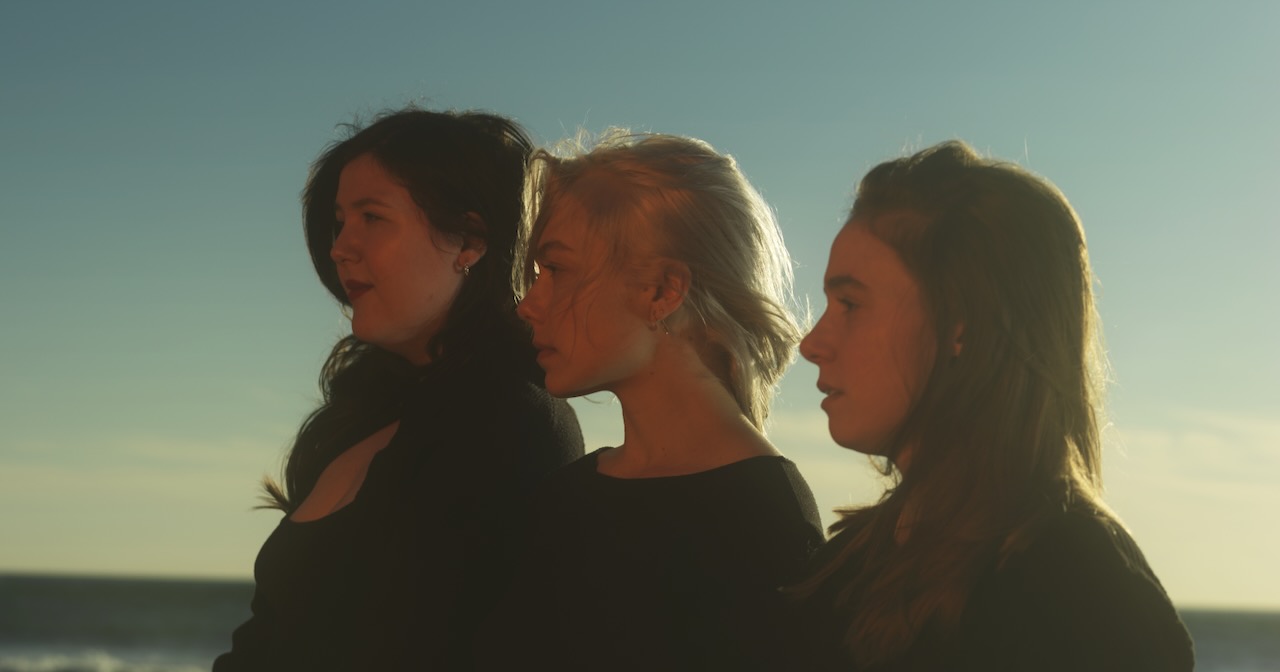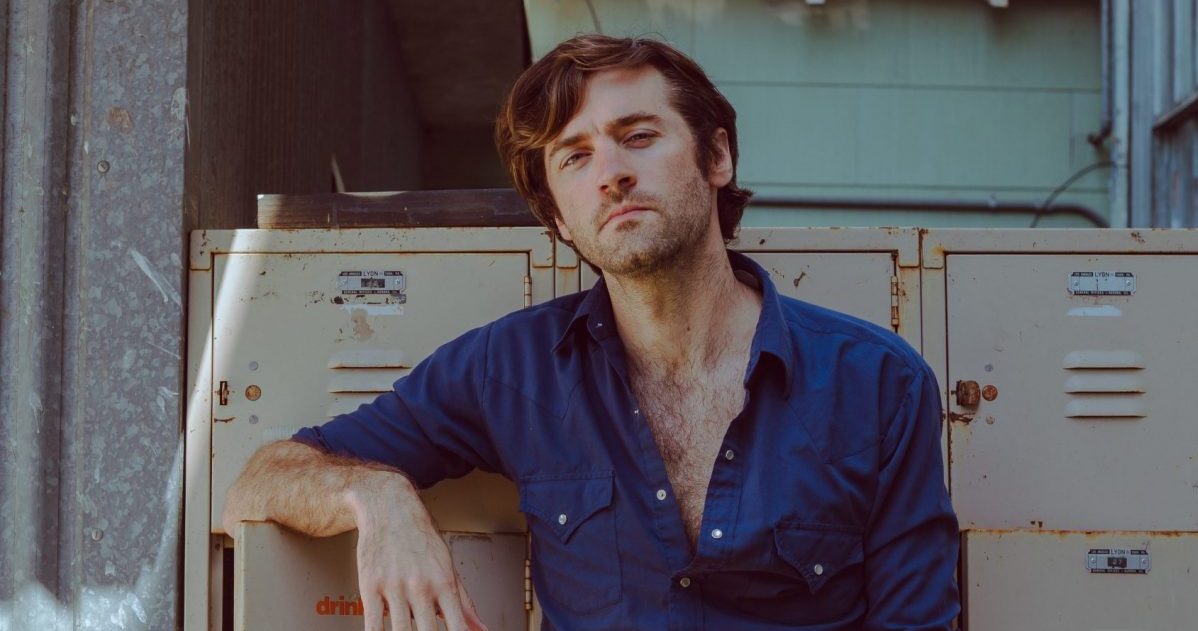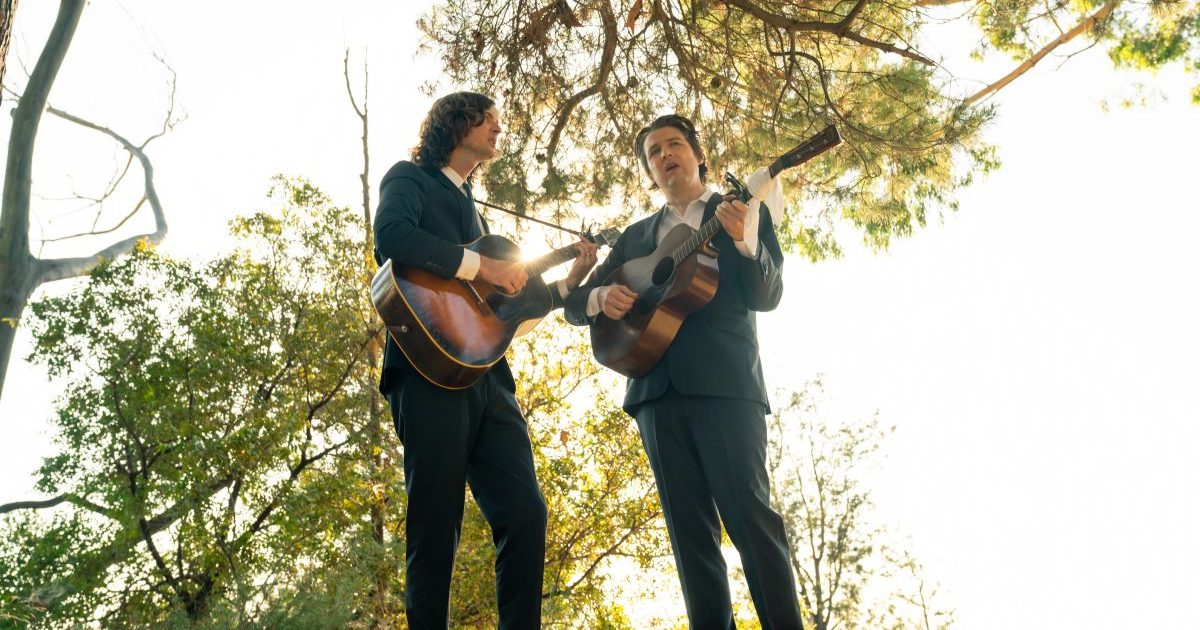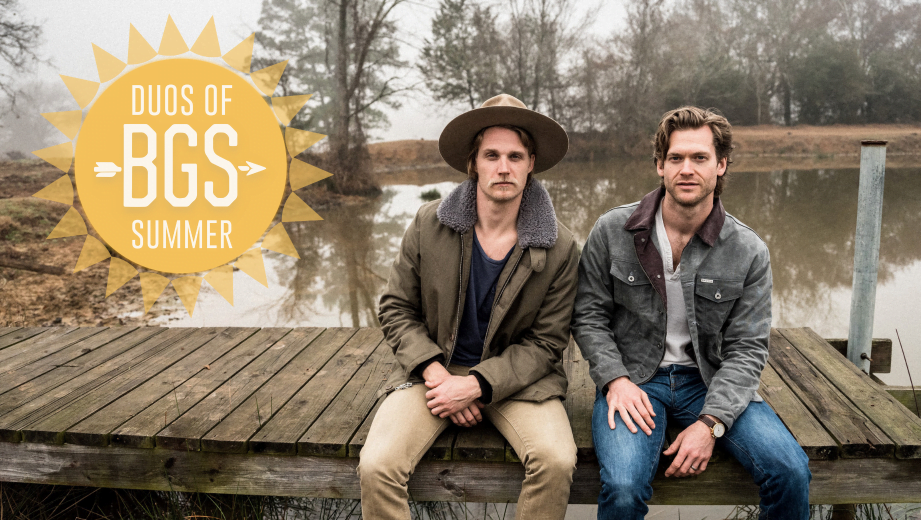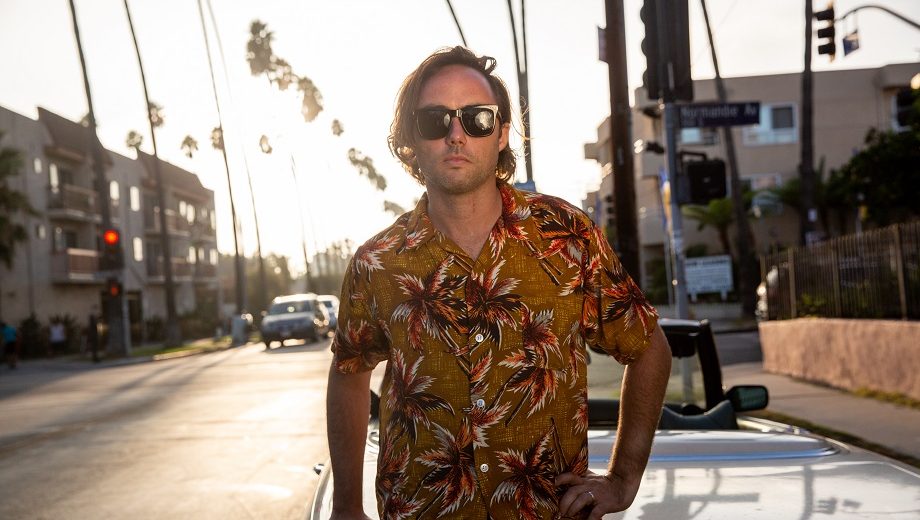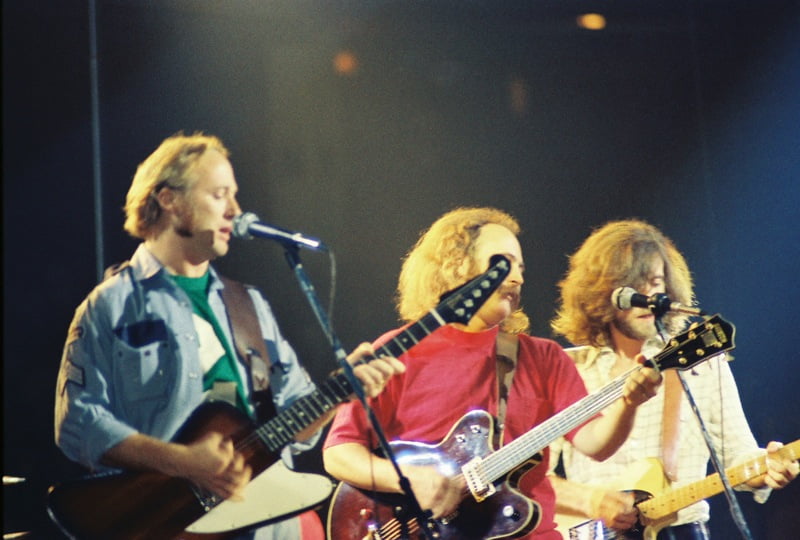The Wildwoods are not shy about the pride they hold for their home state, Nebraska. The Lincoln-based trio – guitarist/vocalist Noah Gose, violinist/vocalist Chloe Gose, and bassist/vocalist Andy Vaggalis – named their gorgeous new album, Dear Meadowlark (out April 11), after the state bird, while songs like “Sweet Niobrara” and “I Will Follow You To Willow” represent odes to specific Nebraska towns.
“The album really is about our home here in Nebraska,” elaborated Noah, who is the group’s principal songwriter.
The Wildwoods have been together, in one form or another, for over a decade. Noah and Chloe, who are now married, first started performing together as teenagers, while Andy had played in the Wildwoods on and off for several years before officially joining them as a trio in 2022. Dear Meadowlark is their fourth full-length, but the first with Andy as a full-time member, and this album showcases their marvelous vocal chemistry throughout its set of gentle, pastoral acoustic music.
Before heading out on an East Coast tour, the three spoke to BGS about their new album, their growth as a band, and how the pandemic actually helped them become more widely known.
You all have been really upfront with how the new album reflects your deep affection for your home state, Nebraska.
Noah Gose: You know, living in a place like Nebraska, you hear a lot about people wanting to move away. But we’ve just grown to really appreciate our life in Nebraska and appreciate having had the opportunity to grow up in a place like Nebraska.
Chloe Gose: As much as we leave, I think we’ve all always appreciated our home.
Dear Meadowlark also has a very smooth musical flow to it. The title track opens the album like a lovely overture, while the contemplative closer, “Postcards From Somewhere,” bookends it as something like a reflective travelogue-type tune.
CG: It kind of felt like [“Postcards From Somewhere”] was the perfect fit to tie everything all together.
Andy Vaggalis: I think it works super well at the end, too, because [the album] is almost like little stories being written on the postcard with the last song for the postcard to be sent off.
NG: And that song originally wasn’t going to be a part of the album. It was just going to be a single. I wasn’t too keen on adding it to the album, but you know what Chloe says goes, so it was her decision to put it on, but now I’m really happy that we decided to do that.
The album’s music is really rooted in your acoustic instruments; however, drums, keyboards, and cello are used to nicely fill out the arrangements. Was that a conscious choice?
CG: I’m glad that you say that, because with our last album, Foxfield Saint John, I feel like each song is very epic-sounding in the sense that it just has a lot going on in all the arrangements, and we really wanted this album to sound more like us like how we sound live.
NG: All those extra instruments don’t really have the main spotlight at any point throughout the album, but they’re definitely kind of underlying things that brought certain parts of the arrangement out.
Noah, you are the primary songwriter – how did you approach writing the songs for Dear Meadowlark, which sounds like it is a quite personal album?
NG: Yeah, our first two albums, Sweet Nostalgia in 2017 and then Across the Midwest Sky in 2019, were all songs that were music first, lyrics second. And Foxfield was kind of half and half. Most of the songs on Dear Meadowlark were lyrics first. I feel like the songs mean more to me personally when the lyrics are first, because all the lines feel more purposeful.
CG: Things that are happening in our life are inspiring the words. So, all the words are very truthful and mean something in real time… I can tell when certain songs were written.
NG: I don’t like writing songs that just feel like everything’s completely made up. I like to just relate every song I write to things that happened in real life.
Are the vocals something that you think about when you are writing the songs, Noah?
NG: I very rarely have Chloe’s vocal range or Andy’s vocal range in mind when I’m writing the initial bones of the song, because I don’t want anything to get in the way of whatever kind of creativity goes into the initial writing. Most of the songs though, I arrange with Chloe singing the melody. I just don’t feel as confident in my own voice as I do in Chloe’s voice. And just with her being the only female voice, I feel like her voice stands out the most and works the best most of the time as singing the melody.
Your wonderful harmony singing seems to have become central to your sound now.
NG: The whole album of Dear Meadowlark was written around three-part harmony being kind of the main focus of the album.
AV: When I joined the group, I had it in my head – “I’m playing bass.” I wasn’t envisioning doing all these three-part harmony stuff. … When I first came back into the fold, it was like learning the songs and just finding a part in between [their voices] that fit. I remember like one night we were trying to make a fun ad for a show, so we switched around the words to “Teach Your Children” by Crosby, Stills, Nash & Young. And I remember just feeling way easier than I normally would at [how] to put the three-part harmony together, and just like, “Oh, shit, that sounds good!”
Andy, while Dear Meadowlark was your first full album in the band’s trio setup, you have been with Chloe and Noah frequently over the years?
AV: I started playing with these guys in 2017. We were like a six-piece band. So, I was on Sweet Nostalgia and Across the Midwest Sky. Through the years, I’ve been lurking around.
CG: We’ve had different musicians playing with us throughout the years, but Andy has always been like a core member – basically since the beginning. … We were in choir together in high school. I think there’s kind of like an epiphany with Andy still playing with us. We’ve had other members and clearly that wasn’t like their dream to be doing that anymore. I feel like the reason why we are all still together and doing it is because we all have the same appreciation for what we’re doing.
Okay, speaking of beginnings, I must ask about the beginning of your musical partnership, Chloe and Noah. You two have been making music together since you were both teenagers.
CG: Noah and I met in 2012 when we were 14. I was playing music with my brother and we just like played for fun basically at farmers markets and stuff. [Noah] joined my brother and me, and we played all throughout high school [as] the Wildwoods.
NG: If you were to see videos of us playing at 14, you would probably turn your computer off. … I only really ever had this acoustic guitar that was my dad’s. So, I didn’t ever dive into any other kind of music other than songs that I would play on the acoustic guitar. And when I met Chloe and I learned that she played the violin, I think I just immediately felt like we should play music together. We really enjoyed each other’s company. And playing together so much over the past 13 years, I think it’s just there was no kind of epiphany at first; I think it’s been a 13-year-long epiphany
Andy, when you decided to formally join the band, you still hadn’t finished college yet – was that a big decision?
AV: I was going to college for music. When I would think about what I wanted to do after graduating college, it was travel around and play music. So, I figured might as well. I didn’t necessarily need college to do that at the moment. I can always go back, right? We’ve been great friends since before I was even playing with them. And then, after years of playing with them, it was a pretty easy decision to talk myself into it.
When you rebranded as a trio, it was also when your group started to get a lot of attention during the pandemic for the cover song videos you put up online.
NG: When we started posting his videos, the response that we were getting from the trio videos was just far better than anything that we had ever done in the past, and so we just felt, “This is what works best!”
AV: Then when the “Home” video (a cover of the 2010 Edward Sharpe & the Magnetic Zeros hit song) blew up, I think it was Halloween night. All of our phones were just notification after notification after notification, and we’re like “This is insane!” And then the next day, it dawned on us, “Okay, this is exciting, but also this is like a little opportunity here that we need to maximize.” We were trying to still practice together, because we were still kind of in the infancy of playing together as a trio.
CG: Yeah, it was kind of a stressful time during that time, because all three of us were teaching music lessons as well as doing the Wildwoods full time. So, we would meet up early in the morning. We’d start our days at like 8 a.m. and just go until 3 or 4, and then we’d all go and teach lessons. Then we would meet up after lessons to finish what we were working on.
Did the viral success of your cover song videos change what the makeup of the audiences coming to your shows?
CG: We went on tour not really knowing what to expect after our social media blew up. And then [on] our first tour, it was really amazing to see. We started just selling a bunch of tickets in cities that we had never even gone to…
@thewildwoodsband ‘Home’ by Edward Sharpe and the Magnetic Zeros🏠 #edwardsharpe #edwardsharpeandthemagneticzeros #home #folk #folkmusic #trio #folktrio #bass #uprightbass #fiddle #acousticguitar #harmonies #eartrumpetlabs #acousiccover #acousticmusic #vibes #sweatervest #fun #love #nebraska #tambourine #guitar ♬ Home by The Wildwoods – The Wildwoods
Did you fear that your cover of “Home” might become your “Free Bird”?
NG: Yeah, it was definitely a worry at first, just because we usually throw in one cover, maybe two. We’re mainly an originals band.
CG: I think it has evolved, now that it’s been a couple of years, where people are finding our original music. And they’re requesting them at shows more so than the cover songs.
AV: Even some deep cuts, too.
The songs on Dear Meadowlark, besides drawing inspiration from your home state Nebraska, also holds a warm, woodsy vibe that suggest to me about being out in nature. How would you describe your sound?
CG: Yeah, I think that’s the vibe we’re trying to go for, like aesthetically and musically. I feel like our music too is very soothing – even our upbeat songs. I don’t know if that’s just because of the harmonies fitting together. It’s very calming and soothing music.
Photo Credit: Emma Petersen
